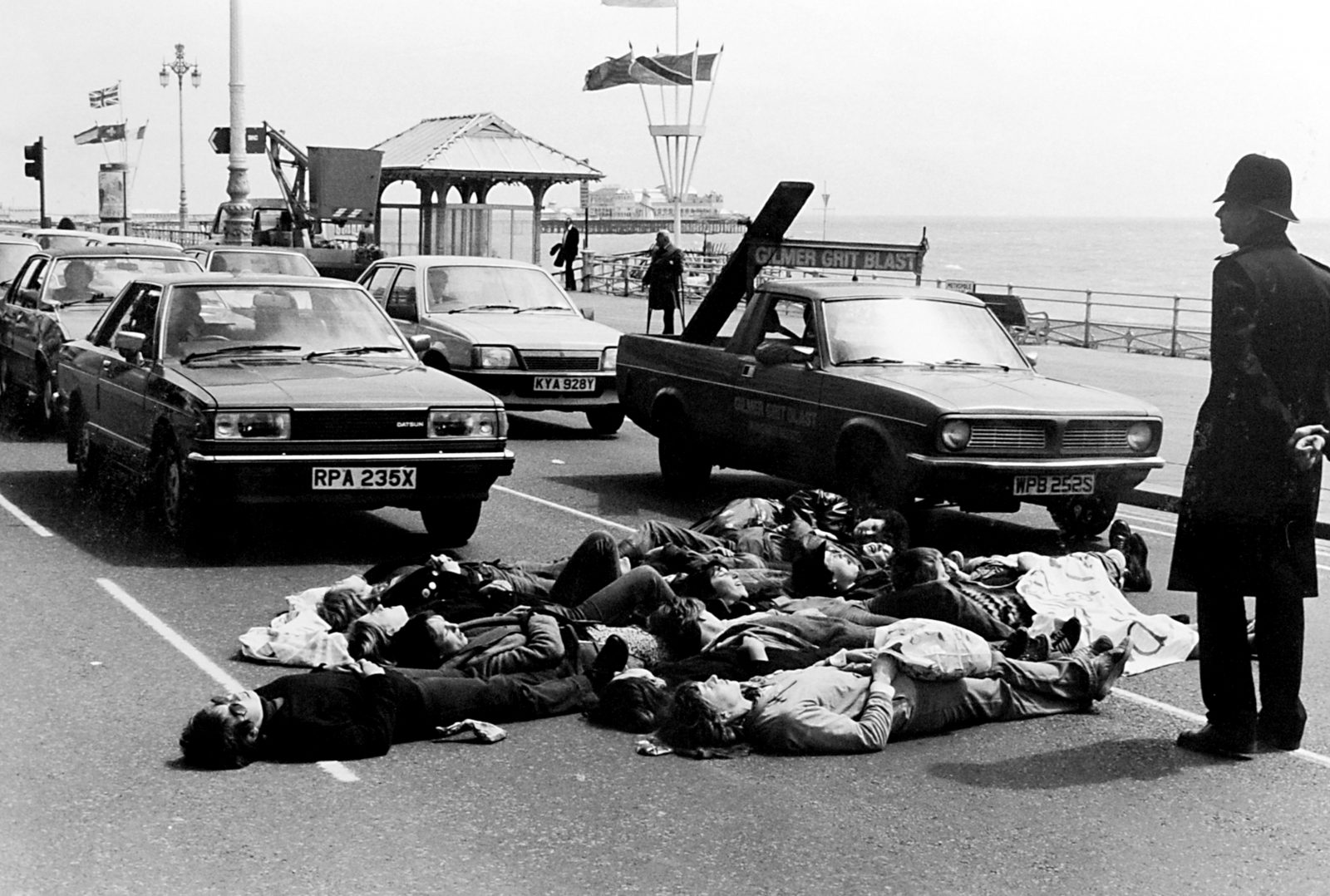"One of the things my father taught me, was that photography is always about the subject, the photographer and photography itself" Henry Jacobson.
Part of the delight in archival photographs is the act of brushing of the dust and rediscovering the imagery and moments gone by from a new, distanced perspective. Throughout the Argus Archives: Whose Streets? exhibit during Brighton Photo Biennial 2012, it was the social history and sense of nostalgia for Brighton that shone through; so imagine our gleeful surprise when Janice Harnden stepped forward and told us that she was one of the activists in our lead festival image. Laying in front of a mounting queue of traffic on Kings Road by the seafront, Janice spotted the black and white artefact of her younger self.
Residing in Brighton since she arrived here as a student in 1979, I asked Janice what she thought of this year’s Biennial.
JH: I was very happy with the theme of this year’s Biennial; it seemed to flow with the spirit of resistance that is strong in our city. It certainly was good timing – in coinciding with the criminalisation of squatting initiated by a Hove MP(!). Also, in relation to the growing problems of homelessness and poverty.
NL: What was your reaction to seeing your image in the exhibition and posters?
JH: I saw the poster from the top of a bus and suggested to my daughter (9) that we got off at the University of Brighton to take a look. I hadn’t recognised myself, but thought the image was appealing and remembered the brilliant images in the previous editions of the Biennial.
Initially, I became tearful. What a blast from the past! I am still in touch with two other women in the image, so it made me miss that special closeness that comes with extreme activism. I’ve also struggled with health problems recently so it made me a little sad; observing all that youthful energy and enthusiasm. Being so present, just in that moment.
Anyhow; my daughter seemed quietly proud – but a little concerned, about the strength of my reaction, so we went to explore the exhibition together.
NL: It’s interesting that you didn’t recognise yourself in the image immediately – do you remember the first time the image was published? What was your reaction then?
JH: I never saw this image when it was first published – I shouldn’t think my friends did either. We didn’t generally read the Argus as it was so reactionary. We were too busy trying to bring about change. I have a newspaper cutting about an action we took at Preston Circus around that time. That was certainly in reaction to Cruise Missiles being moved from their base at Greenham Common.
Were we lying in Kings Road for the same reason? Or,were the Arms Dealers holding their bi-annual “fair” at the Metropole Hotel? – I must say, I’ve still never set foot in the place.
NL: Laying in front of cars as you did is a very visual and powerful statement. Whilst you were participating in the protest, did you consider the importance of press images capturing and publishing the protest?
JH: Although we were aware of the importance of the press, I don’t think publicity was our main aim.We were more concerned with stopping the traffic. If you stop that,you interrupt business and then you are having a direct effect. This was before computers were widely used – a different time!
“Protest and Survive” is still as true now as it was then. Images may help us to get to that point.

